The new state got off to a flying start, at least compared to the other countries that emerged from the ruins of the Danube monarchy. Hungary was demoted from a great power to a bankrupt “royal republic” that tumbled between economic crises and political turmoil, and Poland was soon thrown into a new war and a subsequent military dictatorship. The Czechs, on the other hand, had not only received national sovereignty after three centuries under the Austrians. They also expanded geopolitically, as both Slovakia and Trans-Carpathian Ruthenia (see: Ukrainians) were incorporated into their state.
The economy was another bright spot. Over 60 percent of the industry in the Austro- HungarianEmpire was located in Bohemia, and now it churned out goods to war-torn countries in the East and the West. In addition, new and visionary entrepreneurs, such as the Moravian shoe manufacturer Tomáš Baťa or the inventor and engineer Emil Kolben (actually a colleague of Thomas A. Edison), emerged on the scene. As a result, Czechoslovakia’s economy grew to become what common Czech wisdom stubbornly refers to as “the world’s tenth-largest economy”.
In reality, Czechoslovakia’s economy in the 1920s, broken down, in terms of GDP per head, was, according to the respected historian Vlastislav Lacina, the world’s seventeenth largest, placing itself right in front of Austria. But it was, thanks to extensive coal mining, the world’s seventh biggest exporter. Nevertheless, for most Czechs the First Republic is still associated with an economic boom that dwarfed most of the other countries in Europe.
Be that as it may, one fact remains undisputed: the end of the First World War’s carnage and the Czechs’ and Slovaks’subsequent independence brought about a tremendous eruption of creativity, which recalls the atmosphere of Western Europe in the 1960s.
Take, for instance, the architect Josef Gočár, who redefined French cubism into the peculiarly Czech rondo-cubism. Or the poets Jaroslav Seifert (in 1984 awarded the Nobel prize) and Vítězslav Nezval, who worked out the basis of modern Poetism. In only a few years after 1918, the Barrandov studios right outside Prague (established by ex-president Václav Havel’suncle Miloš) grew into one of the leading studios in the European film industry, with an average production of 80 movies annually.
The Čapek brothers’ R.U.R. (where the word robot was introduced) and The Insect Play gave European drama a virtual vitamin injection; the artist Alfons Mucha, who founded the graphic poster art as we know it today, further developed the unique symbioses between art nouveau and Czech folklore; and Jaroslav Hašek in 1924 revolutionized the history of literature with his flap-jawed, beer-drinking anti-hero Švejk.
Even more impressive is the fact that this eruption of creativity seethed with a spirit of relative tolerance. Certainly, the Czechs tend to exaggerate the harmony during this period, especially so in the dark years under the grossly intolerant Bolsheviks. It remains a fact that Czechoslovakia’s 3.2 million ethnic Germans, who clearly outnumbered the 2 million Slovaks, were not regarded as constitutionally equal to their Slav compatriots. But it’s a telling sign of the tolerance that a vast majority of the country’s Jewsrapidly assimilated themselves.
In the end, however, neither prosperity, nor relative tolerance, blooming arts nor a liberal president Tomáš G. Masarykhelped Czechoslovakia very much. The First Republic survived its founder by a mere year and a half. Yet the nostalgic memories of this golden era and its cruel end have made their mark on modern Czechs.
First, the treason committed against Czechoslovakia in 1938, when Great Britain and France signed the Munich Agreement with Hitler and thus threw the country to the Nazi wolves, made many Czechs wary about the West, and, after the war, adequately enthusiastic about the East (see: Communism).
Second, the stabbing of the First Republic is seen as a classic example of the destiny which history has reserved for the Czechs: there is always some nasty foreigner, be it a militant aggressor or a football referee, who eagerly uses dirty tricks to muck things up for them (see: National Identity). In other words, the Czechs themselves are not to be blamed for their many national disasters.
And third, thanks to 20 years with something that resembled modern parliamentary democracy, many Czechs are firmly convinced that they, after the fall of the Iron Curtainin 1989, had a much shorter path to Western political standards than other nations in the former East Bloc.
Generalizations are always dangerous, and especially when speaking about an entire nation, so let’s put it a bit cautiously: even though Bohemiaand Moravia have a 700-year long history as a multicultural society (see: Germans; Jews), there are plenty of other countries where a foreigner probably will feel more welcomed than in the Czech Republic.
This, unfortunately, seems to go double if the foreigner’s complexion is darker than what’s common in Central Europe— or at least it did in the 1990s, when not only Czech Roma, but also numerous black and coloured foreigners were physically attacked just because of the pigmentation of their skin.
Except for the intolerable demonstrations of violent racism (which is on the retreat, thanks to firmer reactions from the police), it’s not totally impossible to understand why many Czechs are a bit scepticaltowards foreigners.
Just take a short look at their history: the Battle of White Mountain, in 1620, where a coalition of (Catholic) foreigners beat the Czech army into its boots, led to 300 years of Austrianrule. In 1938, Czechoslovakia was — after only 20 years as an independent state — sacrificed to the Nazi wolves (see: Munich Agreement) and then submitted to six years of German occupation that cost more than 120,000 Czechs (78,000 of whom were of Jewish origin) their lives. And finally, in 40 years of communism, the Czechs were in reality governed by dictators based in Moscow. Such traumatic experiences would have marked any nation.
In the Czech instance, it has resulted in what some people regard as a rather inward-looking mentality. Which is quite logical. Every culture can be seen as a defence system; the more you try to change it, the more defensive it becomes. This has not made the Czechs overt nationalists in the ludicrous Scandinavian way (“We are simply the best!”) or in the militant Balkanmanner. Instead, the Czechs have, as the Danish communicationexpert Claus Munck Birch points out, “learned to live with this pressure without really being influenced by it”. Thus, on the surface, many Czechs will accept things imposed on them by their foreign master, but eventually, they’ll do whatever suits them (see: Švejk, The Good Soldier).
In the Czechs’ relations to the approximately 250,000 foreigners officially registered (at least another 250,000 are living here illegally), this has found expression in a somewhat duplicitous attitude.
On the surface, most Czechs are polite and often even obliging towards foreigners. Yet their inner feelings, it seems, often tell them to be cautious and regard them as intruders, just as those scumbags who came in 1620 and 1938 and 1968. As a result, it may be hard to get to know them on a more personal level — especially if the foreigner lacks a command of the Czech language.
The fact that Czechs have to speak a foreign language (which many of them still don’t) and thus risk making fools of themselves seems to be very, very scary. This language problem, however, applies even more the other way around. Many foreigners have lived for years in this country without mastering more than a few phrases in Czech. Learning Czech (of course, nobody expects you to speak it fluently) is therefore a fundamental requirement for breaking the ice.
Читать дальше
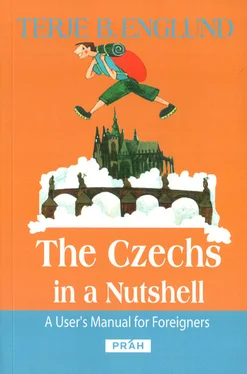
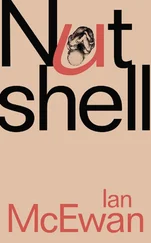
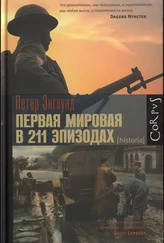


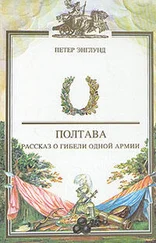

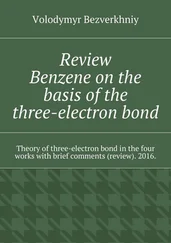
![Theresa Cheung - The Dream Dictionary from A to Z [Revised edition] - The Ultimate A–Z to Interpret the Secrets of Your Dreams](/books/692092/theresa-cheung-the-dream-dictionary-from-a-to-z-r-thumb.webp)



